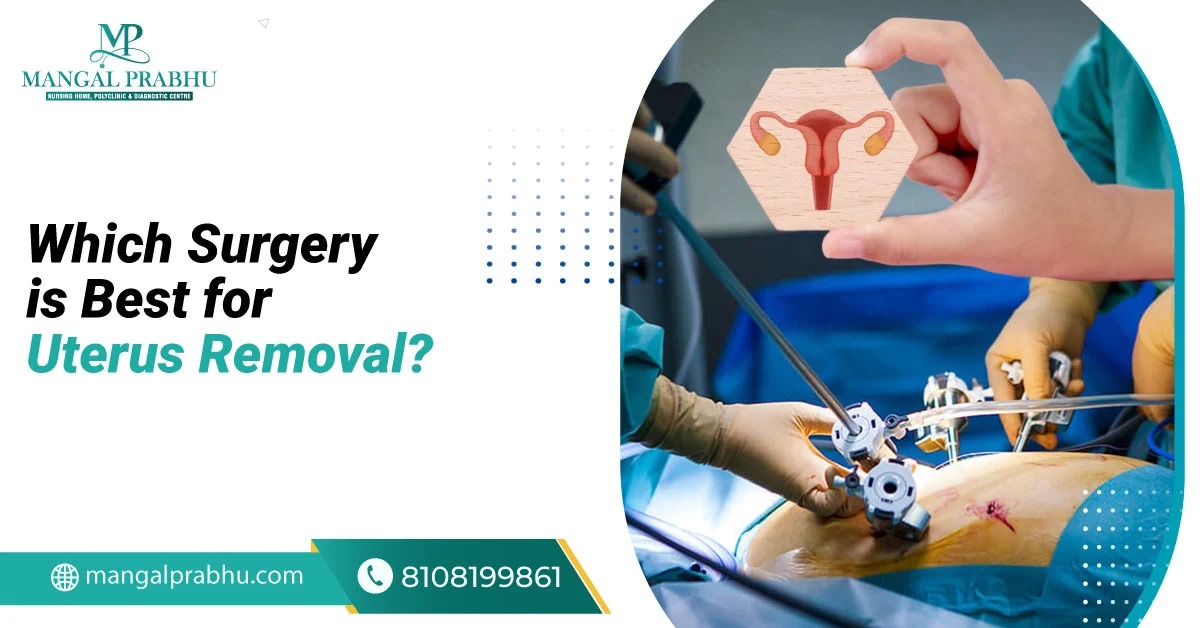
Which Surgery is Best for Uterus Removal?
Hysterectomy is the surgical removal of the woman’s uterus. It’s often considered a last resort for medical issues like endometriosis, uterine fibroids, polyps, cancer, enlarged uterus, uterine prolapse, and uterine rupture. The surgery, however, comes with potential risks. A woman can’t get pregnant without a uterus.
Moreover, if your ovaries were removed during hysterectomy, you will enter menopause immediately. Choose the best hysterectomy surgeon in Navi Mumbai and understand the different surgical methods used for hysterectomy.
Types of Uterus Removal Surgeries
1) Abdominal Hysterectomy
An open abdominal surgery is common for uterine fibroids, hyperplasia, and certain types of cancer. The surgeon makes a 5-7-inch cut either vertically or horizontally above your pubic bone and removes the uterus. If required, the doctor might perform an immediate oophorectomy (ovaries removal) and salpingectomy (fallopian tube removal).
Pros:
- It gives your surgeon a direct access to the uterus and a clear view of the surrounding organs.
- It’s effective for certain conditions where less-invasive procedures might not work.
- The doctor can easily detect any abnormality in your ovaries, fallopian tubes, cervix, and other reproductive parts during the surgery
Cons:
- Longer hospital stay
- Slow recovery
- Higher risk of post-surgical complications
- Scarring
2) Vaginal Hysterectomy
Vaginal hysterectomy is the least invasive and most preferred option for women undergoing hysterectomy. The surgeon makes a small incision on the top of your vagina and uses special instruments to detach the uterus and remove it through the vagina.
Pros:
- It’s performed on an outpatient basis, which means the patient can go home within 24 hours after the procedure.
- Fewer complications
- Quick recovery
- No scarring
Cons:
- It can lead to incomplete removal of the uterine tissues
- Infection around the incision
3) Laparoscopic Hysterectomy
A laparoscope is a thin tube with light and a camera attached to its end. A uterus removal surgery in Navi Mumbai is mainly performed with a laparoscope. The surgeon administers local anesthesia and makes small incisions on your abdomen (about half an inch). They insert a laparoscope into one of the holes, cut the uterus into small pieces, and remove it through the vagina.
Pros:
- Faster healing and quick recovery
- Fewer complications
- Shorter hospital stay
- Lower risk of infection
Cons:
- Not effective for patients with large uterine fibroids, hyperplasia, malignant tumors, and advanced endometriosis.
4) Robotic-assisted Hysterectomy
Robot-assisted hysterectomy is similar to a laparoscopic procedure. The only difference is that a robotic arm is used to perform a hysterectomy.
Pros:
- Offer greater precision
- Short hospital stay
- Fast recovery
Cons:
- Not effective for all cases
Factors to Consider When Choosing a Surgery
A vaginal hysterectomy is the best option for women who want to recover faster and get back to work within 2-3 weeks. There are fewer to no complications, and you can go home the same day after surgery. Laparoscopic hysterectomy is the second-best option. If vaginal hysterectomy is not possible due to an enlarged uterus or fibroids, or other serious issues, your doctor will advise laparoscopic hysterectomy.
The surgeon will consider the patient’s age, health status, uterus size, and previous scars when advising the hysterectomy surgery method.
